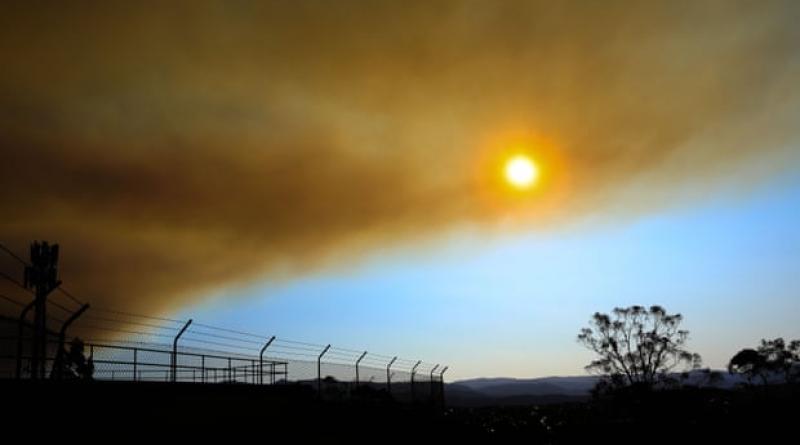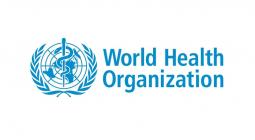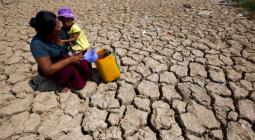Our environment has always affected our mortality, should we add climate change to death certificates?

As temperatures rise we predict increasing morbidity and mortality, particularly in the climate-vulnerable parts of northern Australia.
Last summer was bad for our health. We breathed hazardous air, watched our rivers dry up, lived in towns without water, suffered through scorching heat with record-breaking temperatures, and many people survived intense experience of fire.
Yet our death records for 2020 won’t record this. Death certificates will reflect the heart attacks or lung failure, the injuries and the organ failure that occur at the end of life. They do not record the environmental factors that contribute to these fatal events.
Human health is complex. At its core there is the biology and science of how our bodies work, and how diseases take hold. It is this biology that we record on death certificates with descriptions such as heart attack, stroke, infection and cancer.
Other factors have a strong influence on health and wellbeing. The social determinants of health – factors like education, economics, geography and relationships – have a deep influence on how diseases progress. This often has a powerful influence on life expectancy.
But despite this strong influence, it is much less often reflected in our mortality data. Doctors are increasingly literate in understanding the consequences of these social determinants, yet they often still see these factors as secondary and not worthy of the same attention.
The natural environment in which we live is the other dominant influence on our health and wellbeing. Temperature, weather and the climate have always affected our health, even as we have become better at building shelters and homes to protect ourselves from the elements.
Visionary physicians including Tony McMichael, Bob Douglas and David Shearman have called for years for environmental factors to be given recognition in our understanding of health and wellbeing. And yet in hospitals and medical practices, we are really only just beginning to appreciate the immense influence of the environment on our health.
The lack of consideration can be seen through our Australian health data. The Australian Institute of Health and Welfare reports our health data, with rates of cardiovascular disease, cancers, diabetes and infection sitting along side some important socioeconomic indices such as location, education and economics. Within this data is very little information to reflect the health effect of the environment, with events like bushfires, floods and drought not well represented at all.
Research from our group at the Australian National University published this week suggests that up to 2% of mortality in Australia is influenced by very hot temperatures. As clinicians we are seeing patients in hospital affected by heat, and we can also see there are longer term affects from increasing temperatures, yet mortality from heat is not routinely presented by our federal agencies.
Published in the Medical Journal of Australia recently, colleagues from University of Tasmania demonstrate that mortality from bushfire smoke over summer months from November to February was likely to be more than 400 people, and that many thousands of people went to hospital over that period because of the smoke. This information does not come from death certificates or from health department data, but from statistical and attribution analysis of the period.
Climate change is the greatest health challenge we face in Australia, even after we recover from the coronavirus pandemic. Our last summer has given us a serious lesson in the influence of environmental factors on our health and wellbeing. As temperatures rise in Australia, we predict increasing morbidity and mortality, particularly in the climate-vulnerable parts of northern Australia.
As temperatures rise and extreme weather events become more common we will see this reflected in our health data. It is time for our health agencies and health professionals to understand the risks and reflect them for our population to understand. We can start this by adding environmental factors to our death certificates and hospitalisation data.
Through naming and describing the threat we go part way to confronting it. For years climate scientists have warned that hundreds of millions, if not billions of people are likely to be affected by climate change over this century. Heat is one of the major threats. And we can now begin to see why these predictions have been made and how sobering this is when considering the health and wellbeing of Australians.
The current global pandemic carries a mortality rate of less than 1% for those infected. Population mortality is much, much lower because of our control mechanisms and the global response. Rising temperatures through climate change threatens the health and wellbeing of so many more people and deserves more attention and response.
The solutions to combat climate change offer tremendous opportunities and health benefits. As we respond to the global pandemic we have a remarkable opportunity to combat a number of serious threats to our human future, creating a safer, cleaner and kinder world. Part of addressing the challenge comes from recognising the magnitude of the risk to our health. It is immense and demands attention today.
-
Dr Arnagretta Hunter is a cardiologist and human futures fellow within the ANU college of health and medicine
21 May 2020
The Guardian




